
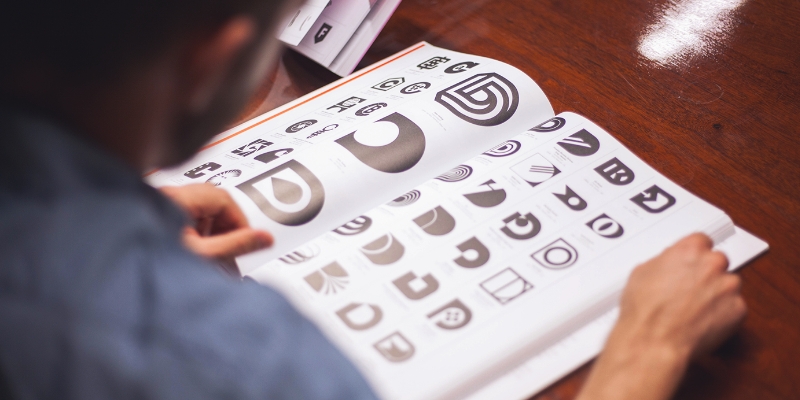
Whether you’re a fledgling start-up or a long-standing corporate, investing time and money in a logo design may seem pretty low on the list of priorities. As a new business owner you may be thinking “I have so many factors to consider, do I even need a logo at all?”, or an existing business owner “I have a logo we created years ago, why would I do it again?”.
The power of a logo is often underestimated, for many businesses an after-thought, and sometimes maybe even considered completely optional. In actual fact a logo is one of the most important, valuable and integral assets every business should have. Almost as important as the products and services themselves! “But why?” I hear you say, “It’s just a little symbol”. Read on to find out exactly why a logo is so important, and a worthwhile investment for any business, new or old.
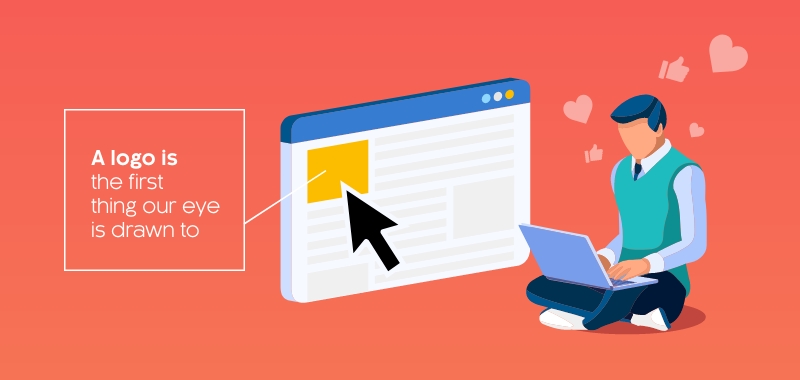
In the modern marketplace shoppers are spoilt for choice. We are bombarded by advertising everywhere we look, and modern consumers have adapted to making snappy decisions and ignoring everything that doesn’t immediately grab their attention. Now more than ever making a great first impression is extremely important.
When shopping, a potential customer takes less than 3 seconds to decide if they will invest any more time in a company's products or services. There is limit to what can be digested in 3 seconds. A logo sits front and centre on almost all marketing collateral, and will therefore play a considerable role in the decision of whether or not a consumer chooses to engage or continue browsing.
It can be very frustrating for business owners that people are so quick to judge a book by its cover. You may offer a far superior service but because a competitor has invested heavily in their aesthetics, potential customers will often choose them instead. On holiday, when tossing up between two adjacent lunch spots - one that looks a little tired and dated, and one with a fresh, attractive exterior - which one would you choose? The locals might know the food at the older looking establishment is far better than the other, but those who don’t make a decision based on what they can see in front of them; the logo and branding.
It’s never too late to change that first impression, and your logo is the best place to start.
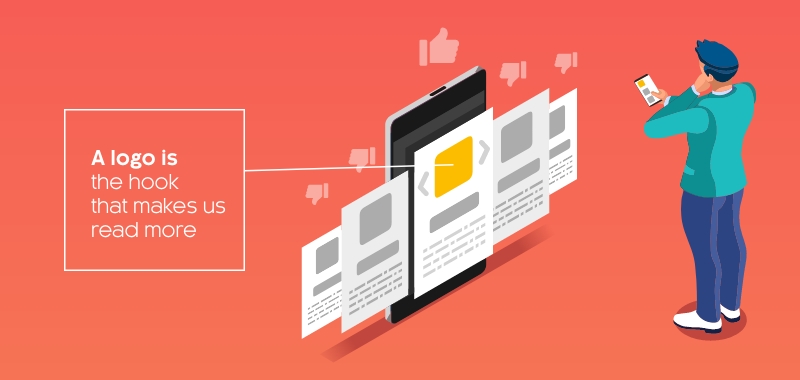
As mentioned above, in most market sectors there is more choice available to consumers than ever before. For business owners this means not only do we need to worry about local competition, but with the ever-increasing popularity of online shopping, national and even international competitors are just as big a threat. Making sure you stand out in this growing crowd is the best way to keep your competitors at bay.
Whether browsing the internet, walking the high-street or flicking through a catalogue, you want to draw in your potential customers at first glance. Your logo is the first point of contact, and greatest asset to encourage consumers to stop and engage with your business over another.
Stand out from the others around you - don’t just blend in. A well-designed logo should be unique, but most importantly, instantly connect with your target audience, giving them a reason to pause, continue to read, or enter your establishment. Dare to be different! As Marty Neumeier says, “When everybody zigs, zag.”
A logo is a way to differentiate, to stay a step ahead of the competition and draw the spotlight in a crowded marketplace. Ensuring your business has a logo that is appropriate, simple and distinctive is giving yourself the best possible chance to grab the attention of prospective clients ahead of your competitors.
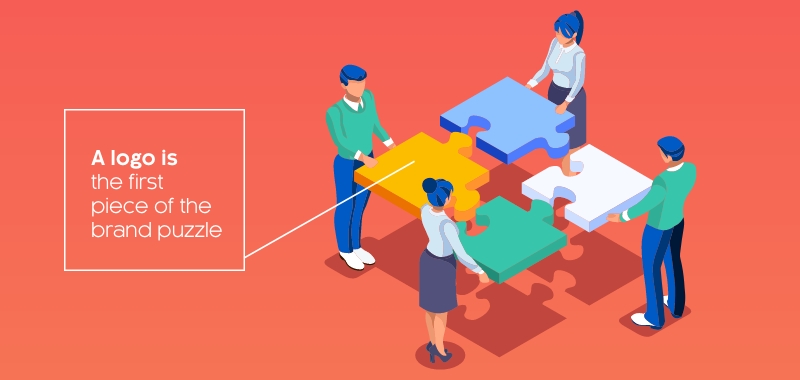
When done well, a good logo is the first and most important building block of a company’s entire brand. A successful brand conveys a story to its audience, with the goal of forming an emotional connection, creating a long lasting impression that keeps people coming back again and again. A logo may be considered a tiny part of this big picture, but a well designed mark sets the tone that the rest of the brand is built on - colours, fonts, voice, personality, patterns, and direction for all future marketing collateral.
If a company’s logo design is outdated it can be extremely challenging, and sometimes completely unachievable, to change consumer perception through simply attempting to alter other assets. Changing the look of a website, advertising and marketing materials, without first rebranding the logo can lead to a disconnect between different parts of a business, and confusion for customers. Similarly, a new business using a logo that is inappropriate for its sector or target market, can steer the rest of the company's branding in the wrong direction from the get go.
Making sure that first building block is perfectly suited to your business and target audience gives a solid and reliable foundation for a business to tell its story the way it should be told. All elements of a business's branding should be consistent and cohesive. The best way to ensure this is to start from the logo up!
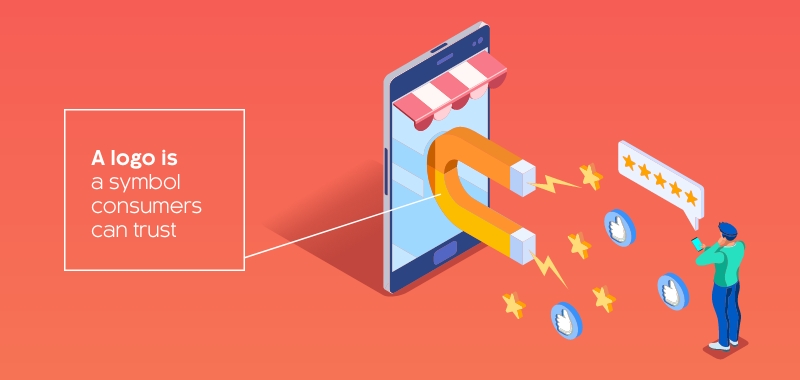
A logo is designed to identify, not to communicate as is often assumed. It doesn’t need to show what you do, it should simply be unique enough to be easily recalled by anyone who sees it. Unfortunately, it is likely that people will forget your business name, but visual cues are easier to remember. If a customer associates your logo with a positive memory, and even better, a positive feeling, they are even more likely to remember you and seek you out again. Having a well designed, distinctive mark gives your audience a lasting visual cue to associate with your business.
As your business grows, more people will come into contact with your logo. Your mark should be on everything you produce, from products to marketing collateral. The more widespread your logo becomes, the more it is ingrained into people’s memory. McDonald’s now have upwards of 35,000 restaurants in 119 countries, and almost anyone on the planet could tell you what their logo looks like. When someone seeks out a golden arch they know what to expect when they find it. Regular sightings of a logo helps establish a business as being trustworthy, reliable and successful.
A good logo encourages people to interact, but also keeps them coming back. It is a key factor in establishing brand loyalty. Once trust is established people will seek you out. Your logo is their way-finder!
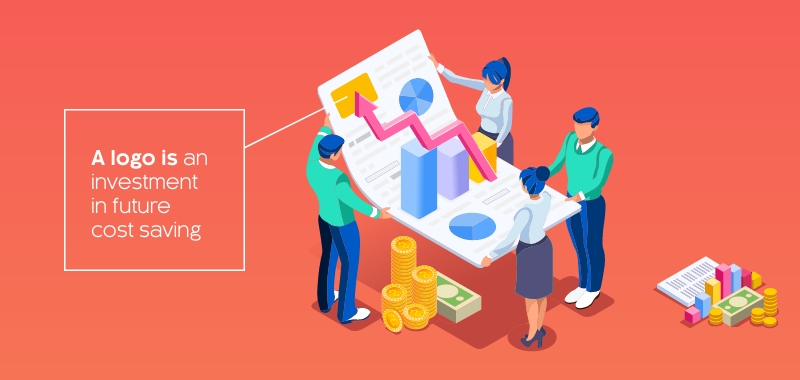
When starting a business from scratch, investing capital into designing a logo may seem like an inconvenient and unnecessary expenditure. Equally, rebranding an existing business may feel like an expensive and avoidable undertaking. On the contrary, going with a quick fix, or sticking with a poorly designed or inappropriate logo may in fact lead to costs in the future that could have been avoided.
A key feature of any good logo should be versatility. As the marketing landscape changes with digital and emerging technologies, so to do the requirements of a business’s logo. Your logo should look great wherever it is applied, remaining clear, consistent and legible. A mark that may have only been required on stationery initially, could now be needed digitally in formats not originally anticipated.
A logo that is overly detailed may not translate well to increasingly common smaller applications, such as app icons, website favicons, pins and badges. Logos which are too large or have unusual dimensions may not fit well in a website header, digital ads or other marketing material, potentially dragging down brand collateral on all client-facing touch points. A mark which doesn’t work in a single colour, limits its use over images, patterns and video, hindering a brands ability to adapt and stay current. In order to ensure your brand is well received across all applications, time and money must be invested into fixing these issues. A well-designed logo should lend easily to all mediums and hold potential for your brand to easily adapt to unforeseen future applications.
A poorly designed logo may also be responsible for a substantial shortfall in potential revenue. If your mark is not memorable, is lost in the crowd or just doesn’t resonate well with your target audience, it may be selling the company short.
Should a business change direction in the future, a logo designed with little foresight could become immediately inappropriate. For example, a company offering scenic cruises who opt for a boat as their logo, later expand into aviation. The boat symbol is no longer a fitting mark, but a more universal symbol for travel such as a compass could have prevented the need for a complete rebrand.
Investing in a professional logo design process should help uncover these future pitfalls early, enabling the designer to create a well-considered mark that can stand the test of time. A logo that is highly versatile and ready for anything will prevent headaches further down the line, saving time and money in the long run.
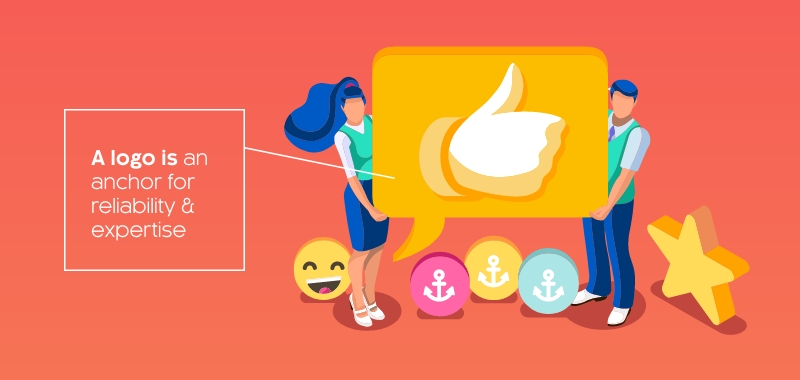
A logo is an important credibility anchor for any business. Whatever the industry, a logo shows that a company is professional and well established. To not have a logo at all can give the opposite impression, that a business is disorganised, inexperienced or even untrustworthy.
A well designed mark can be used to communicate more than just professionalism. Depending on the sector and the target audience, a logo design can create validity by communicating more of a business’s story. A transport company whose safety features are second to none can infer this through a strong and powerful symbol. A cafe who specialise in free range healthy produce can convey their ethos through a delicate and organic brand mark.
In the modern marketplace a great logo design is expected of a business, and is something we actively seek. Consumers make decisions between one brand or another based purely on a logo. Given the choice of two identical plain t-shirts, one with a nike label, and one unbranded, 99% of us would opt for the swoosh, a familiar stamp of quality.
We seek companies out using their logos, for instance when browsing price comparison websites, or business directories.
We remember companies by their logos. “Can you grab me a coffee from...I can’t recall the name but the cup had a mermaid on it”.
We stay with a company because of a logo. In an electronics store you may see a product you know absolutely nothing about, but if it has an Apple logo it’s a safe bet, so purchase it anyway.
People expect a logo. It is the first thing they look for on any product or communication as an identifier; business cards, flyers, billboards, apparel, merchandise. A logo is a big stamp of credibility. To not have a logo is missing out on these golden opportunities to connect with, and maintain, your target audience. A logo is an opportunity, not an obligation.
If you didn't have time to read the full blog, or want a take-away, check out this easy to digest infographic version!
Red Kite Design Infographic - Why is a logo so important?
Well there you have it! Whether you’re a new business on the block deciding whether or not a logo is a worthwhile investment, or an established organisation wondering if a rebrand is a good idea, we hope this has helped you to see that a great logo design is an integral asset to the success of any business. It may seem low on the priority list, but it shouldn’t be. A good logo forms the foundation for a strong and cohesive brand, and when done correctly, will make a business more profitable.
At Red Kite Design we endeavour to help businesses avoid these pitfalls, and set the stage for future success. We design logos and identity systems to suit every client's unique requirements, making sure all the boxes are ticked! If you’re interested in us creating a logo for your business, get in touch to discuss your project. Drop us a line at [email protected], or request a quote.

Article by:
Chris brings over a decade of industry experience to Red Kite working at design agencies in both the UK and Australia. Over the years he has accumulated a wealth of graphic design, strategic identity design and marketing experience. Chris is a hugely passionate identity designer endeavouring to offer the highest quality branding and logo design Brisbane and Australia wide. Chat to Chris about your branding.
We would love to hear more about your design project and how we could help bring your vision to life. Simply hit the button below to get started with a free quotation.
GET A FREE QUOTE